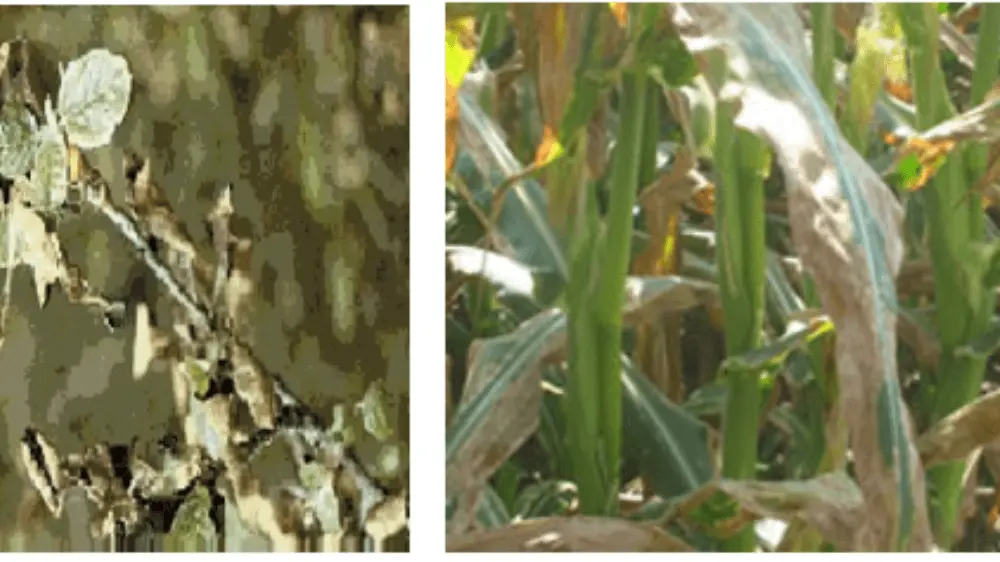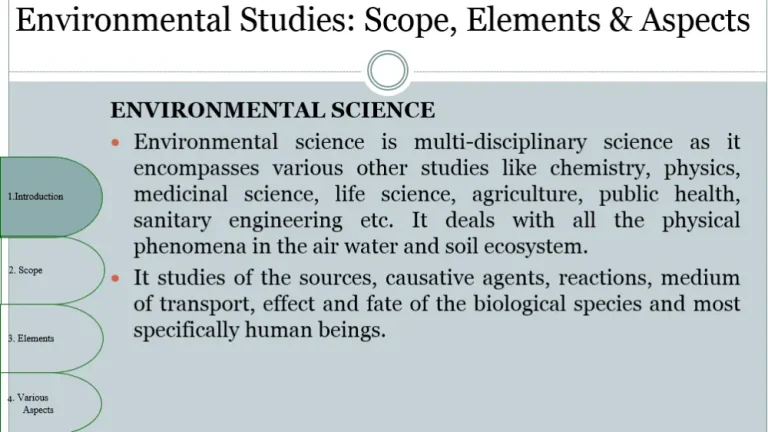Air Pollution Effect on Plants? Air Pollutants | PPTs
Air pollution not only contributes to respiratory disorders in humans and other animals and causes damage to buildings but it can also affect plants. The effects of air pollution on plants develop over time.
How does Air Pollutants affect Plants
Effects of Air Pollution on Plants
Some plants are more susceptible to pollution damage than others Air pollution injury to plants can be evident in several ways. Injury to foliage may be visible in a short time (necrotic lesions), or it can develop slowly (yellowing or chlorosis of the leaf). There may be a reduction in the growth of various portions of a plant (stunted growth). Air pollution may also cause leaf damage and make plants vulnerable to different diseases.
During low pollution and/or when the plant’s defense systems are sufficient to limit the physiological impact of a pollutant, this resistance still has a physiological cost in terms of a decrease in size and yield. It is called “invisible damage”. During heavy pollution, when the plant’s defense systems are not sufficient, irreversible damage appears such as cell death (leaf necrosis). This is referred to as “visible damage”.
Effects of Ozone
Ozone is the main pollutant in the oxidant smog complex. Effects of air pollution on plants were first observed in the Los Angeles area in 1944. Since then, ozone injury to vegetation has been reported and documented in many areas. Localized ozone levels also contribute to the already high background levels. Injury levels vary annually and white bean, which is particularly sensitive, is often used as an indicator of damage. Other sensitive species include cucumber, grape, green bean, lettuce, onion, potato, radish, rutabagas, spinach, sweet corn, tobacco, and tomato. Resistant species include endive, pear, and apricot.
Ozone injury occurs on the upper surface of affected leaves and appears as flecking, bronzing, or bleaching of the leaf tissues. Although yield reductions are usually with visible foliar injury, crop loss can also occur without any sign of pollutant stress. Conversely, some crops can sustain visible foliar injury without any adverse effect on yield.

Susceptibility to ozone injury is influenced by many environments such as high relative humidity, optimum soil-nitrogen levels, and water. Injury to the plant leaves is also influenced by the stage of maturity. The youngest leaves are resistant. With the expansion, they become successively susceptible to middle and basal portions. The leaves become resistant again at complete maturation.
Effects of Sulfur Dioxide
Major sources of sulfur dioxide are coal-burning operations, especially those providing electric power and space heating. Sulfur dioxide emissions can also result from the burning of petroleum and the smelting of sulfur-containing ores.
Do you Know
Flecking: Coloured leaf spots
Bronzing: Leaf dies at tips or margin
Smelting: Extraction from ores.
Sulfur dioxide enters the leaves mainly through the stomata (microscopic openings) and the resultant injury is classified as either acute or chronic. Acute injury (Figure 2) is caused by the absorption of high concentrations of sulfur dioxide in a relatively short time. The symptoms appear as 2-sided (bifacial) lesions that usually occur between the veins and occasionally along the margins of the leaves. The color of the necrotic area can vary from a light tan or near white to an orange-red or brown depending on the time of year, the plant species affected, and weather conditions. Expanded leaves usually are the most sensitive to acute sulfur dioxide injury, the very youngest and oldest being somewhat more resistant.
Chronic injury is caused by long-term absorption of sulfur dioxide at sub-lethal concentrations. The symptoms appear as yellowing or chlorosis of the leaf, and occasionally as a bronzing on the undersurface of the leaves. Different plant species and varieties and even individuals of the same species may vary considerably in their sensitivity to sulfur dioxide. These variations occur because of differences in geographical location, climate, stage of growth, and maturation. The following crop plants are generally considered susceptible to sulfur dioxide: alfalfa, barley, buckwheat, clover, oats, pumpkin, radish, spinach, squash, and tobacco. Resistant crop plants include asparagus, cabbage, celery, corn, onion, and potato.

Effects of Fluoride
Fluorides are discharged into the atmosphere from the combustion of coal; the production of brick, tile, ceramics, and glass; the manufacture of aluminum and steel; and the production of hydrofluoric acid, phosphate chemicals, and fertilizers. Fluorides absorbed by leaves are conducted towards the margins of broad leaves (grapes) and to the tips of monocotyledonous leaves (gladiolus). Little injury takes place at the site of absorption, whereas the margins or the tips of the leaves build up injurious concentrations. The injury (Figure 3) starts as a gray or light-green water-soaked lesion, which turns tan to reddish-brown. With continued exposure the necrotic areas increase in size, spreading inward to the midrib on broad leaves and downward on monocotyledonous leaves.

Studies of the susceptibility of plant species to fluorides show that apricot, barley, blueberry, peach (fruit), gladiolus, grape, plum, prune, sweet corn, and tulip are most sensitive. Resistant plants include alfalfa, asparagus, beans, cabbage, carrot, cauliflower, celery, cucumber, eggplant, pea, pear, pepper, potato, squash, tobacco, and wheat.
Effects of Air Pollution on Plants – Video Lecture
Effects of Ammonia
Ammonia may be released into the atmosphere by different accidents involving the storage, transportation, or application of anhydrous and aqueous ammonia fertilizers. A brief exposure can cause severe injury to vegetation in the immediate vicinity.

Complete system expression on affected vegetation usually takes several days to develop and appears as irregular, bleached, bifacial, necrotic lesions. Grasses often show reddish, interveinal necrotic streaking or dark upper surface discoloration. Flowers, fruit, and woody tissues usually are not affected, and in the case of severe injury to fruit trees, recovery through the production of new leaves can occur (Figure 4). Sensitive species include apple, barley, beans, clover, radish, raspberry, and soybean. Resistant species are alfalfa, beet, carrot, corn, cucumber, eggplant, onion, peach, rhubarb, and tomato.
Effect of Particulate Matter
Particulate matter such as cement dust, magnesium-lime dust, and carbon soot deposited on the stomata of plants’ leaves can inhibit the normal respiration and photosynthesis mechanisms. Thus Air Pollution inhibits the process of photosynthesis by blocking light entry into the plant system. Particulate deposition in the forest may vary from 280 to 1000 kg per hectare. This deposition causes very little damage because of the cuticular layer present.

In moist conditions, cement dust may cause chlorosis and death of leaf tissue by the combination of a thick crust and alkaline toxicity. The dust coating (Figure 5) may also affect the normal action of chemicals applied as sprays. In addition, the accumulation of alkaline dust in the soil can increase soil pH to levels adverse to crop growth.
Conclusion
Air Pollution affects human health and visibility by blocking sunlight. it also impacts plants by blocking light for photosynthesis, respiration, and transpiration. It ios a source of Green House Gases (GHG), that is linked to global warming and Climate Change as well.
I’m Dr Qaiser Maqsood (PhD), a dedicated researcher and expert in Biological Sciences, Gardening, Bio-Diversity, Ecology, and Environmental Sciences. I’m much concerned about Environmental Pollution, Climate Change, Plantation, Gardening, and Global Warming. My passion is to explore innovative solutions in all these fields.
Be aware that we have ONLY ONE EARTH. Protect it!!






